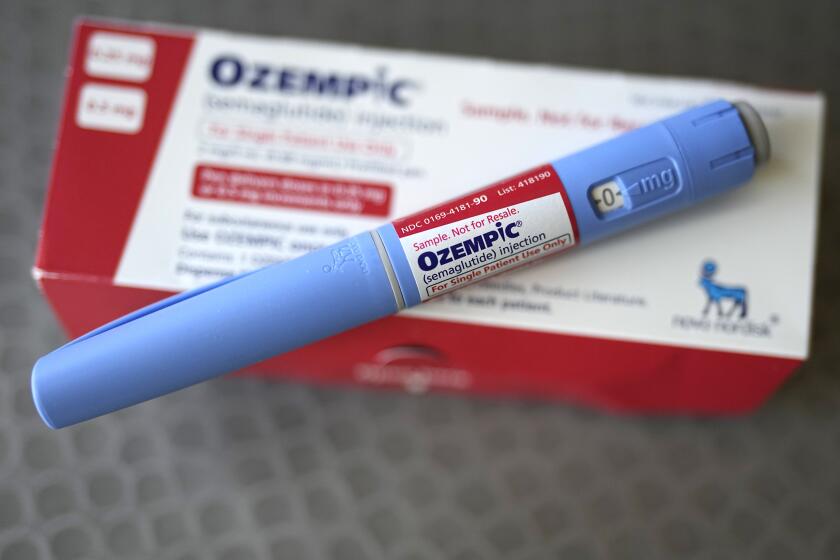Blocked artery? It’s unlikely you need a stent, but your doctor may not tell you that
- Share via
For years, the usual protocol in patients with blocked arteries has been for doctors to perform angioplasty, inserting a tiny mesh tube known as a stent to keep the artery open. The procedure is performed nearly a million times a year in the U.S.
Like most invasive procedures, however, this one comes with significant risks, including the potential for heart attack, kidney failure, stroke and bleeding. In addition, inserting stents is expensive: Medicare spent more than $10 billion last year on the procedure.
The expenditure would be justified if stents were the only — or even the best — way to treat blocked arteries. But research has now shown definitively that, except for people in the throes of a sudden heart attack, angioplasty and stents are no better at preventing future heart attacks or keeping patients alive than administering inexpensive and safe medications.
So, why is the procedure so widely used? The reasons are complicated. The use of stents entered clinical practice more than 40 years ago without any evidence from randomized head-to-head comparisons of stents to medications. Belief in their superiority quickly became so great among the cardiologists performing the procedure that there seemed no need to conduct randomized studies.
Eventually, however, such trials were done, and one after another they found little or no difference in outcomes between stents and medication. But established practice is slow to change.
The most recent trial should end debate. The well-designed, federally funded so-called Ischemia study followed more than 5,000 patients with heart blockages and chest pain over 3½ years, and it provided conclusive evidence that stents were no better than medications in preventing heart attacks or saving lives.
Despite this strong, high-quality evidence, many proponents of stents justify their continued use citing evidence that patients who receive stents have less chest pain. But a study from 2017 convincingly refutes this claim. A British study compared patients’ reported chest pain, treadmill stamina and quality of life between one group who underwent angioplasty and received stents, and a second “placebo control” group that underwent anesthesia and all the other parts of the procedure, but actually did not get a stent. Patients who thought they got stents but did not scored the same in chest pain reduction, treadmill tests and quality of life as those who actually received stents, revealing that the powerful placebo effect, long observed in drug trials, is plainly evident in device trials, too. In other words, it appears that pain improvements that have been attributed to angioplasty and stents are likely due to the placebo effect of the procedure.
In theory, patients are informed of the risks of receiving stents and make informed decisions prior to the procedure. Unfortunately, in most cases the consent is woefully inadequate. Several studies have shown that patients aren’t told or don’t understand the risks or that stenting has been found no more effective than medicines in preventing a heart attack or death.
In a 2007 study on which I was a co-author, we asked doctors why they do these procedures, even when evidence suggests no better outcome than with medicines. Their responses included that patients expect it, that it is part of the medical culture, that doctors are afraid of getting sued if they do not insert stents (error of omission) and that they prefer the risk of harm by doing something (error of commission) to the risk of harm from doing nothing.
To understand the popularity of stents, despite the lack of evidence in their favor, we must also consider our medical system. In it, doctors receive higher rewards for performing procedures than for talking about medications and lifestyle. Plus, we live in a culture that tends to believe high-tech solutions are always superior to old-fashioned things like medication.
Even if clinical mind-sets on stenting begin to shift, the larger problem won’t have been solved. We need to start requiring higher quality clinical data on the safety and effectiveness of high-risk, implanted devices such as stents prior to FDA approval. We also need a robust postmarket system that tracks problems with devices in a timely fashion once they are on the market. And we need to change reimbursements that currently incentivize procedures over talking with patients.
In my practice, I find that patients almost always prefer to avoid invasive procedures when they are fully informed that medical therapy will work equally well. More talk and less intervention could save billions of dollars on procedures with less risk of harming patients.
Rita F. Redberg is a cardiologist and professor at the UC San Francisco School of Medicine.
A cure for the common opinion
Get thought-provoking perspectives with our weekly newsletter.
You may occasionally receive promotional content from the Los Angeles Times.






